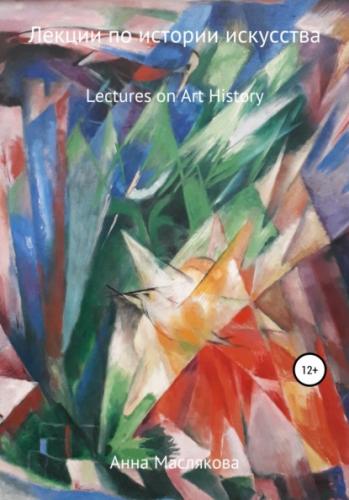Nevertheless, it was during the Baroque époque that mirrors acquired particular importance creating the illusion of a much larger space and reinforcing the effect of surprise which, as you know, was essential for the Baroque aesthetics. Suffice it to mention the Hall of Mirrors in the Palace of Versailles demonstrating that France could rival the Venetian monopoly on mirror manufacturing, or the Audience Room of the Grand Palace in Peterhof designed to the order of the Emperor Peter I to surpass the grandeur of the Versailles (see Fig. 2.).
Fig. 2. The Audience Room of the Grand Palace in Peterhof.
Рис. 2. Аудиенц-зал в Большом Дворце в Петергофе.
On the one hand, mirror could give its owner “superpowers” – for instance, Perseus killed the Gorgon Medusa using a mirror, and in Peter Paul Rubens’ painting “Perseus and Andromeda”, located at the Hermitage Museum in St. Petersburg, one can see the hero holding his shield with the head of Medusa on it. One can even travel with the help of a mirror, as shown in Lewis Carroll’s novel “Through the Looking Glass” telling a story of a girl who slipped through a mirror to another world. Besides, a mirror can warn of danger, just like in the movie based on Agatha Christie’s story “In a Glass Darkly” telling about a man who “witnessed” a murder of a young girl reflected in a bedroom mirror.
Fig. 3. The reflection of a statue in a mirror, Repin Estate Museum.
Рис. 3. Отражение статуи в зеркале, Музей-усадьба
И.Е. Репина.
It should be noted that many prominent film directors used mirrors in their films so as to enrich the symbolism of the plot – for instance, the “Mirror Talk” from Jean Luc Godard’s move “Breathless” in which the protagonists examine their faces in the mirror while chatting; or Andrei Tarkovsky’s film “Mirror” showing Alexei, the main character, looking intently at his reflection in the mirror. Yet, on the other hand, the excessive use of the mirror may lead to a negative effect – let us use as an example “Narcissus” by Caravaggio who, according to Ovid’s “Metamorphoses”, fell in love with his own impression, and died of his passion, and, after that, ended up in Dante’s “Inferno”. In this regard one should also mention the fate of the Evil Queen from the “Snow White and Seven Dwarfs” – longing to be “the fairest of them all”, she would turn to her Magic Mirror every morning to make sure that her goal was achieved, and that ultimately led to her death.
A broken mirror is no less dangerous – for instance, the Snow Queen shattered the glass into thousands of small pieces and made it so that the fragments fell into the eyes of people, as a result of which a person was evil, and hated the beautiful while the fragment was in their eyes. And in the film “The Mirror Crack’d From Side to Side”, inspired by Agatha Christie’s story with the same title, Mrs. Bantry, when recounting to Miss Marple the events that occurred on the day of the murder, uses the lines from Alfred Tennyson’s poem “The Lady of Shalott”, in which a curse falls upon the heroine of the poem when the mirror cracks, to describe the look she observed on Marina Gregg’s face.
It is possible that the secret of the attractiveness of mirrors will never be completely unraveled. After all, no matter how much we look in the mirror, we see not how others perceive us, but our “mirrored” reflection.
Лекция вторая
Размышления о роли зеркала в искусстве
Общеизвестно, что в течение долгого времени зеркало было признаком достатка. И считалось, что зеркала самого высокого качества производились только в Венеции. Например, в Лувре можно увидеть Зеркало Марии Медичи, украшенное драгоценными камнями, которое было подарено королеве венецианскими мастерами.
Прежде всего, зеркало позволяет увидеть вещи с необычного ракурса, добавляет дополнительные смыслы, делает привычные вещи неоднозначными. И я нахожу крайне увлекательным делать фотографии отражающих поверхностей, таких, как стеклянные фасады зданий, или водная гладь, поскольку это даёт возможность по-иному взглянуть на объекты, отражённые в них, приблизиться к пониманию мира не таким, каким он является для нас, но таким, каким он является на самом деле (см. Рис. 3.). Давайте, к примеру, посмотрим на картину Яна ван Эйка «Портрет Четы Арнольфини», находящуюся в Национальной Галерее в Лондоне, на которой изображено зеркало, показывающее двух мужчин, входящих в комнату. На картине «Менины» Диего Веласкеса, которая по праву считается жемчужиной коллекции Музея Прадо, можно увидеть висящее на стене зеркало, отражающее фигуры родителей инфанты Марии Испанской, изображённой на переднем плане, – короля Филипа V и его жены Марианну Австрийскую. Более того, диалог между барменшей и джентльменом, изображёнными на картине Эдуарда Мане «Бар в ‘Фоли-Берже’», оказывается оптическим трюком, поскольку мужчина стоит вне поля зрения художника, слева, и смотрит в сторону от барменши, а не стоит прямо перед ней. Похожий приём был использовал Олафуром Элиассоном (Olafur Eliasson) в его инсталляции «Пятиугольный Зеркальный Туннель», представленной в Музее Emma
